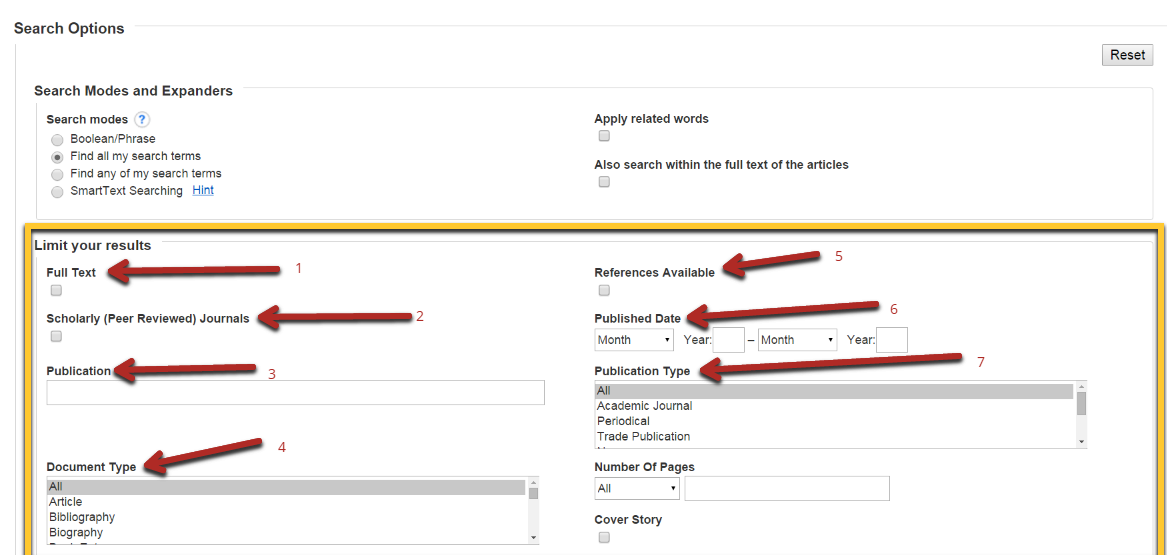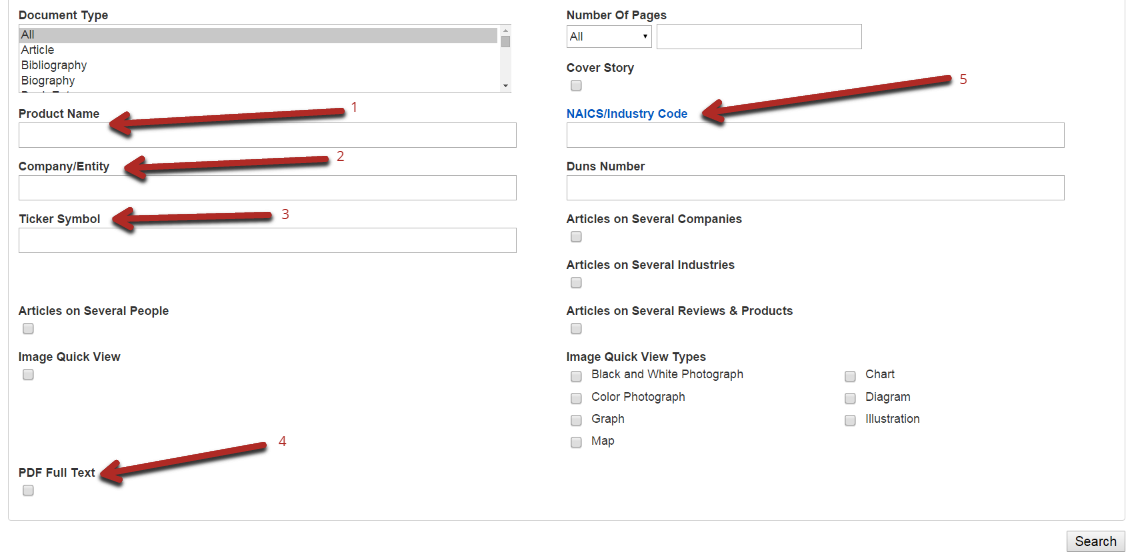For this section on Business Source Premier, we are going to look at the limiters that are found under "Limit Your Results" on the advanced search options. If you have any questions about the "Search Modes and Expanders" listed above "Limit Your Results," please see the previous section. Due to the number of search options available, this section is broken into two different images but only one video.

- "Full Text" is for limiting your results to only full text articles and documents. This is handy if you need to narrow your search results, or if you need your document immediately; however, it does limit your search results. If you find you are struggling to locate relevant articles, try unchecking this box and then using the Five Simple Steps to Finding Full Text to find the PDF of the article you are looking for.
- "Scholarly (Peer Reviewed) Journals" are going to limit your search results to only the articles that come from Peer Reviewed Journals. Click here to learn more about peer reviewed articles. Remember, if you check this box, you will not receive results that are from sources not peer reviewed such as country reports, newspapers and industry profiles.
- "Publication" allows for you to search for terms in a specific publication. To do so, enter the name of the publication you wish to search for or within and then enter your actual search terms above in the search boxes provided.
- "Document Type" allows you to limit your results by certain types of documents. This is great if you need to limit to interviews, letters, editorials, reviews, or just articles.
- "Reference Available" requires that the results that are returned have citations available. Most non-academic work will not include citations or references, so keep that in mind.
- "Publication Date" will allow you to limit your results to a specific period in time.
- "Publication Type" will allow you to limit your results to a specific type of publication. This is useful if you are looking for industry profiles, country reports,or newspapers.

- "Product Name" allows you to search for a specific product and to get only articles and reports on that product.
- "Company/Entity" allows you to search for a specific company or entity so you only get articles and reports about that company. This is good for finding company reports or industry reports about certain companies.
- "Ticker Symbol" is for finding articles based on a companies ticker symbol that represents them on the stock markets.
- "PDF Full Text" is going to limit your full text search results to only those that have a PDF attached to the record. This will eliminate any HTML full text results.
- "NAICS/Industry Code" allows you to limit your search results by a certain industry, such as "Wheat Farming" or "Roofing Contractors" to name two of the hundreds available. The complete list of codes can be found on EBSCO's Support Page.




